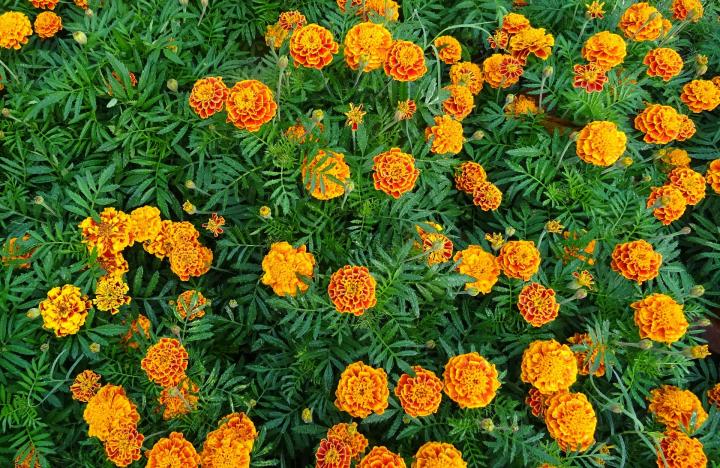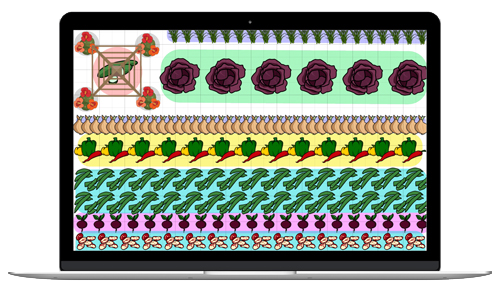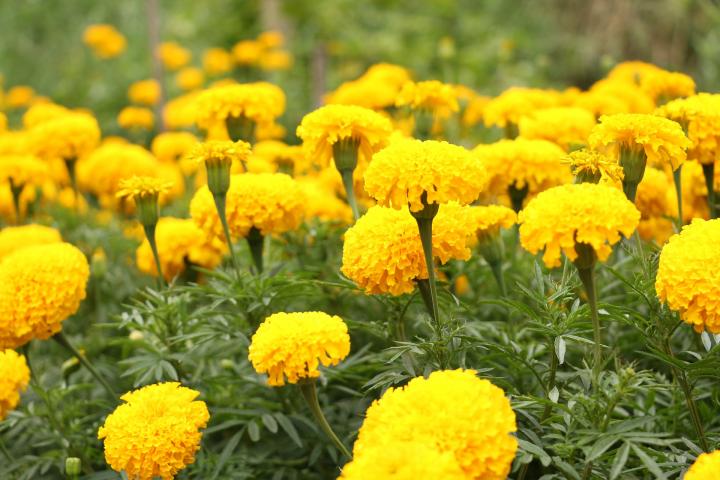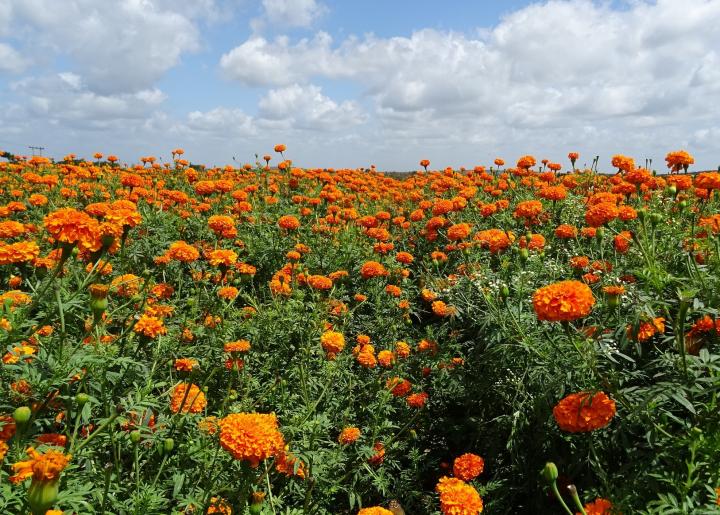
Sunshine on a Stem: Learn Why to Add These Sunny Blooms to Your Garden!
The Almanac Garden Planner - Use It Free for 7 Days!
Plan your 2025 garden with our award-winning Garden Planner.
Types
Marigolds have been stereotyped, but they offer tremendous variety. Both the American and French marigolds are generally aromatic, too, although some folks find the scent to be a bit overwhelming. Keep that in mind when choosing a planting site.
Marigolds have daisy- or carnation-like flower heads produced singly or in clusters. Although there are some 50 species, most we see in the garden are one of the following:
- Tagetes erecta (aka African marigolds, American marigolds, or Mexican marigolds): This species is the tallest and most upright marigold, reaching 3 to 4 feet in height and producing large, full flowers. According to Nate Dalman of the University of Minnesota Extension, “Despite the names, African marigolds did not originate in Africa and instead are called that because they were first imported to Europe via a trade route that passed through northwest Africa.” They’re native to Mexico and Central America and will thrive even under drought-like conditions.
- T. patula (aka French marigolds): This species tends to be smaller, bushier, and more compact than T. erecta. They are often wider than they are tall. Elegant and eye-catching, they have relatively demure flowers and usually grow from 6 inches to 2 feet tall. They are better suited to rainier conditions than the other Tagetes species.
- T. tenuifolia (aka signet marigolds): These petite marigolds do well in hot, dry sites and make for a beautiful edging plant. They rarely reach more than a foot in height.
French Marigolds (T. patula)
- ‘Little Hero’ Series: 7-inch-tall plants with large, double carnation flowers in 7 color combinations of maroon, orange, and yellow.
- ‘Hero’ Series: 10-inch-tall plants with double carnations, large (2-inch-wide) flowers in 7 different combinations of yellow, orange, and maroon.
- ‘Bonanza’ Series: 2-inch-wide, double carnation flowers in 5 different combinations of yellow, orange, and maroon on bushy, compact 8-inch-tall plants.
- ‘Aurora’ Series: 1-foot-tall plants with wide-petaled, anemone-like flowers in shades of maroon, yellow, and orange.
- ‘Janie’ Series: Early blooming. 8-inch-tall plants are perfect for container growing. Double carnation type flowers in 6 different combinations of yellow, orange, and maroon.
- ‘Boy O’ Boy’ Series: 6-inch-tall prolifically flowering plants with flowers in shades of maroon, yellow, and orange

American/African Marigolds (T. erecta)
- ‘Jubilee’ Series: 2-foot-tall plants with dense, double flowers in shades of yellow and orange.
- ‘Gold Coin’ Series: 1½- to 2-foot-tall plants with large (5-inch-wide) double blooms in gold, yellow, and orange.
- ‘Safari’ Series: 1-foot-tall plants with flat-topped, large flowers in shades of maroon, yellow, and orange.
- ‘French Vanilla’: 3-inch-wide flowers are pure creamy white. Minimal scent. Plants are 1½ to 2 feet tall.
Where to Buy Marigolds
ADVERTISEMENT
When planting marigold plants bought from a garden centre should the centre flower bud be deadheaded to promote bushy growth and not high growth.
Deadheading does indeed promote bushier growth; it also encourages blooming. You don’t need to restrict yourself to the center bud. Examine the plant and get rid of any flowers on the wane and edit a few unopened buds—this may seem counterintuitive, but it works! Regular deadheading ensures a longer blooming season. (Be sure you pluck spent flowers before they have time to go to seed.)
can someone discribe development stages of Marigold ?
Marigolds are annuals, so they complete their life cycle in one season. The seed is the embryo. It develops roots and sends up vegetative growth (seed leaf) called cotyledon. It continues to grow and photosynthesize, eventually resulting in a flower. Marigolds need to be pollinated to reproduce seed. The plants die once new seeds mature.
I just received a flower of a marigold.... I live it Auckland NZ , and it's Autumn going onto winter... It generally rains a lot during winter and there will not be a lot of sunlight , so do you recommend I keep the flower inside or still plant it outside ? And because of the wet and moisture how often should I water it ?
How much water does this plant need? How many times a day/week does it need water?
Keep the seeds moist—not soaked—until they become established. Then water as needed, a couple or few times per week, contingent on rain (or lack of it).
I love Marigolds, but wanted to make sure they were safe, I have two toy poodles who nibble on my plants.
Marigolds, at least for humans, are really good for the digestive track and actually pretty healthy and safe to eat. Though I cannot say for certain, I would bet that your dog might just be nibbling on the plants to calm her stomach--the same reason why some dogs can be observed eating grasses from the lawn.
My marigolds are being eaten by snails! What to do? I have a dog and cannot use poison. I have also tried beer, but alas it rains frequently here in Florida. Appreciate any suggestions.











